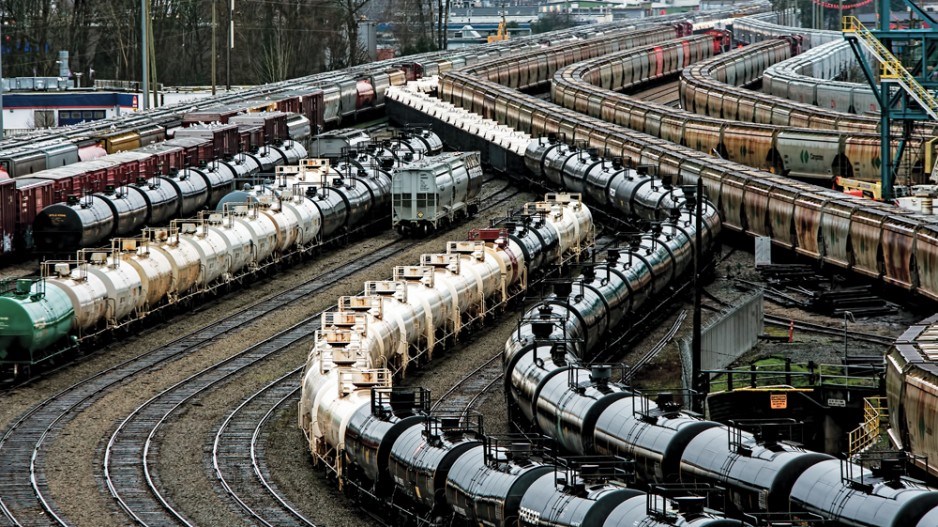Southwestern B.C.’s supply-chain disruptions can be addressed only by dramatically improving the rail and road infrastructure damaged by recent heavy rainstorms.
That is the view of experts in transportation and trade logistics and infrastructures, who noted that B.C.’s geography and the reality of global market demands mean that there is unlikely to be major shifts of supply-chain patterns or practices long-term.
Rather, the focus will likely be to rebuild the road, rail and flood mitigation infrastructure far better to prevent future disruptions to key trade routes in and out of the Port of Vancouver and the rest of the Metro Vancouver region.
That, said Peter Hall, is because there are few alternatives for Canadian goods looking to reach international markets or suppliers other than the Port of Vancouver.
“I think we will see a lot of effort by B.C. - with federal support – to try to strengthen these supply chains and to make them able to withstand these type of disruption,” said the Simon Fraser University professor and transportation logistics researcher. “Perhaps there will be more blasting, embankments and the strengthening of river crossings. That’s the way to expect a response, and the reason for that is the alternatives to the current transpacific supply chain.
“Yes, one alternative is to route to U.S. ports. But they are pretty full – and it’s not something that the Canadian government would encourage anyways. There’s Prince Rupert, but that port is more oriented towards [linking to] U.S. markets. So are we going to see changes like more warehousing in Vancouver? It’s hard to see how that’s going to happen. So it’s more likely we will see the maintaining of existing routes and infrastructure to support getting cargo to places like Toronto and Calgary first.”
But Hall noted that current road disruptions are much more serious than rail.
So the more concerning disruptions to the supply chain will be getting goods to regional communities that rely on short-haul truck routes. Large volume freight bound for global markets will suffer less in comparison.
Regardless of who is taking the brunt of the current supply-chain disruptions, the key now will be to build back to a much higher standard, said University of British Columbia professor Nemy Banthia, a top researcher in infrastructure rehabilitation and innovations in concrete building materials.
Banthia said that, with current rough estimates of the rainstorm’s economic impact running as high as $32 billion, even a conservative estimate of 10% of that loss being physical infrastructure means that about $1 billion worth of building materials will be needed.
That is concerning, Banthia said, because manufacturing cement and other transportation infrastructure materials accounts for up to 15% of the world’s greenhouse gas emissions.
“The production of one tonne of cement creates about one tonne of carbon dioxide,” he said. “It’s ironic, isn’t it, that we are going to rebuild these structures to a higher standard – with greater loads and resilience – that’s also going to cost the use of greater amounts of material. And that exacerbates the problems further, because they will also generate more emissions, which makes climate change even worse.
“The only way to address the problem is to build to greater resilience while being insistent on using carbon-neutral materials.”
Banthia added that construction planning needs to consider deeper foundations and stronger designs to withstand future weather anomalies. That, however, requires officials to understand the type of forces newly rebuilt roads and bridges with be subject to, which leads to Banthia’s main rebuild suggestion: include sensors at key infrastructure locations to collect data needed for that assessment.
Banthia, who is also the CEO and scientific director of IC-IMPACTS, said that was the approach taken with two road projects he undertook with the organization, which is a joint Canada-India research centre addressing urgent needs like water management, sustainable infrastructure and public health.
In two demonstration projects, IC-IMPACTS used sensors to track the performance of its fibre-reinforced pavement concrete technology.
Banthia said that data provides officials with the information they need to know how strong supply-chain infrastructures need to be. It also generates warning signs ahead of washouts and other unexpected events.
Banthia agreed that these measures would likely add to reconstruction costs, but he implored officials to change their perspective in understanding the cost savings of longer-lasting structures that require less maintenance and avoid more disruptions over the structure’s lifespan.
“We have to keep an eye on innovation with a focus on durability so that we can enhance the lifespans of these structures from around 30 years to 100 years. We need a holistic view here. What caused the problem in the first place? How can we fix it? How can we fix it now to get the economy back on track, and how can we continue fixing it so we don’t forget about it in a year’s time?”
Hall agreed
He added that there is already evidence of federal and provincial government officials moving towards more climate-change mitigation funding in infrastructure projects before the rainstorms hit B.C.
How officials manage the likelihood of more severe weather in maintaining the resiliency of B.C.’s supply chain may define the province’s future transport legacy.
“There’s certainly talks of a rethinking of supply chains on a global scale with what’s happening during the pandemic,” Hall said. “But the challenge of getting in and out of Vancouver while staying within Canada, that’s the story of B.C. So there’s nothing new about the challenge presented to us by the mountains between us and the Prairies, and that’s ever-been the case.” •




